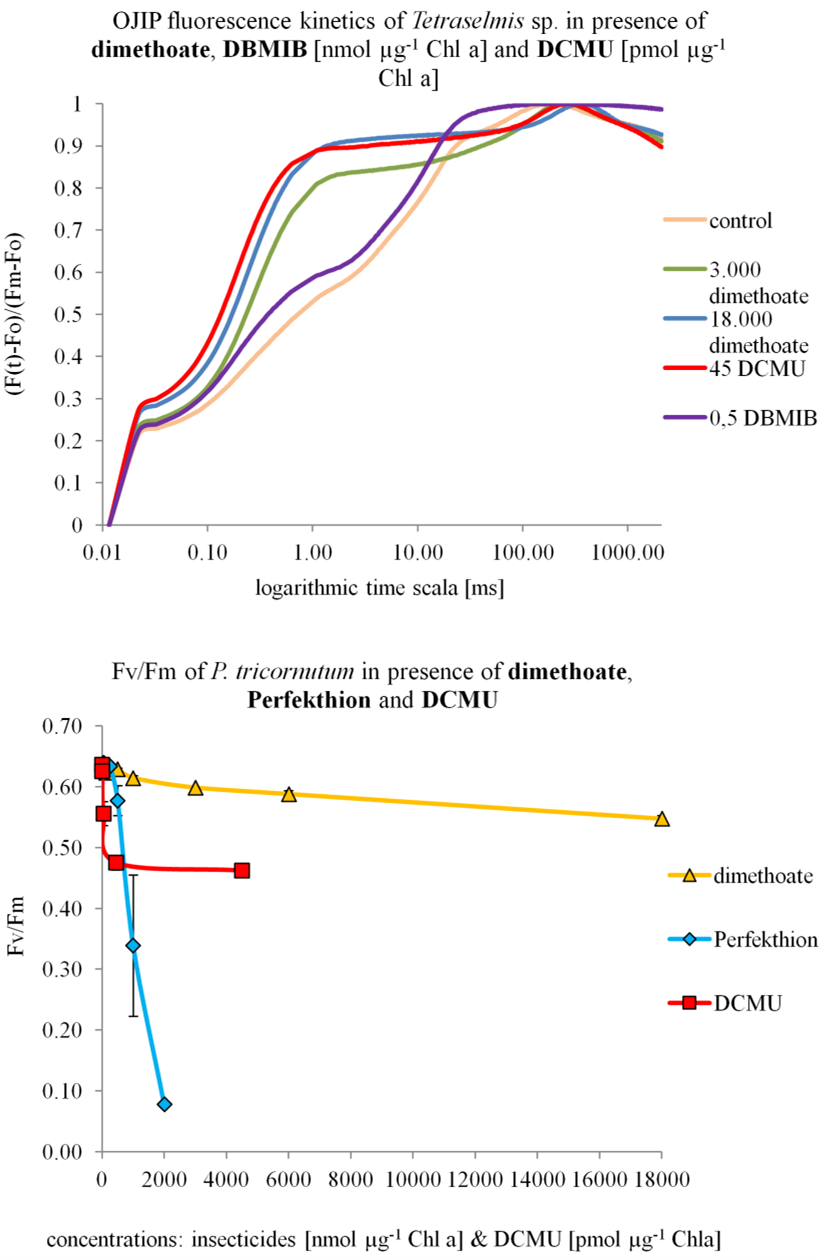
Dimethoate is an organophosphate (OP) insecticide used in agriculture to kill insects. However, information on the effect of the insecticide on non-target organisms like phytoplankton is sparse. When dimethoate enters water ecosystems, it affects the photosynthesis of the phytoplankton cells. The effect of dimethoate on the photosynthesis mechanism of three Chlorophyceaen and two Bacillariophyceaen species was studied measuring oxygen production, chlorophyll fluorescence and xanthophyll pigments. Oxygen evolution rates of the five phytoplankton species decreased with increasing dimethoate concentrations. OJIP fluorescence characteristics in presence of dimethoate was similar to those of DCMU inhibition. DCMU is a PSII inhibitor used as a positive control. Non-photochemical quenching (NPQ) development and the concentration of specific xanthophyll pigments decreased with increasing insecticide concentration, giving another evidence for the target of dimethoate in the selected phytoplankton species. Dark relaxation kinetics did not show a photoinhibition of the cells in presence of dimethoate. Perfekthion, the commercial formulation of dimethoate, inhibited the photosynthesis of the tested phytoplankton species stronger than dimethoate, leading probably to photoinhibition.
Total file downloads: 8